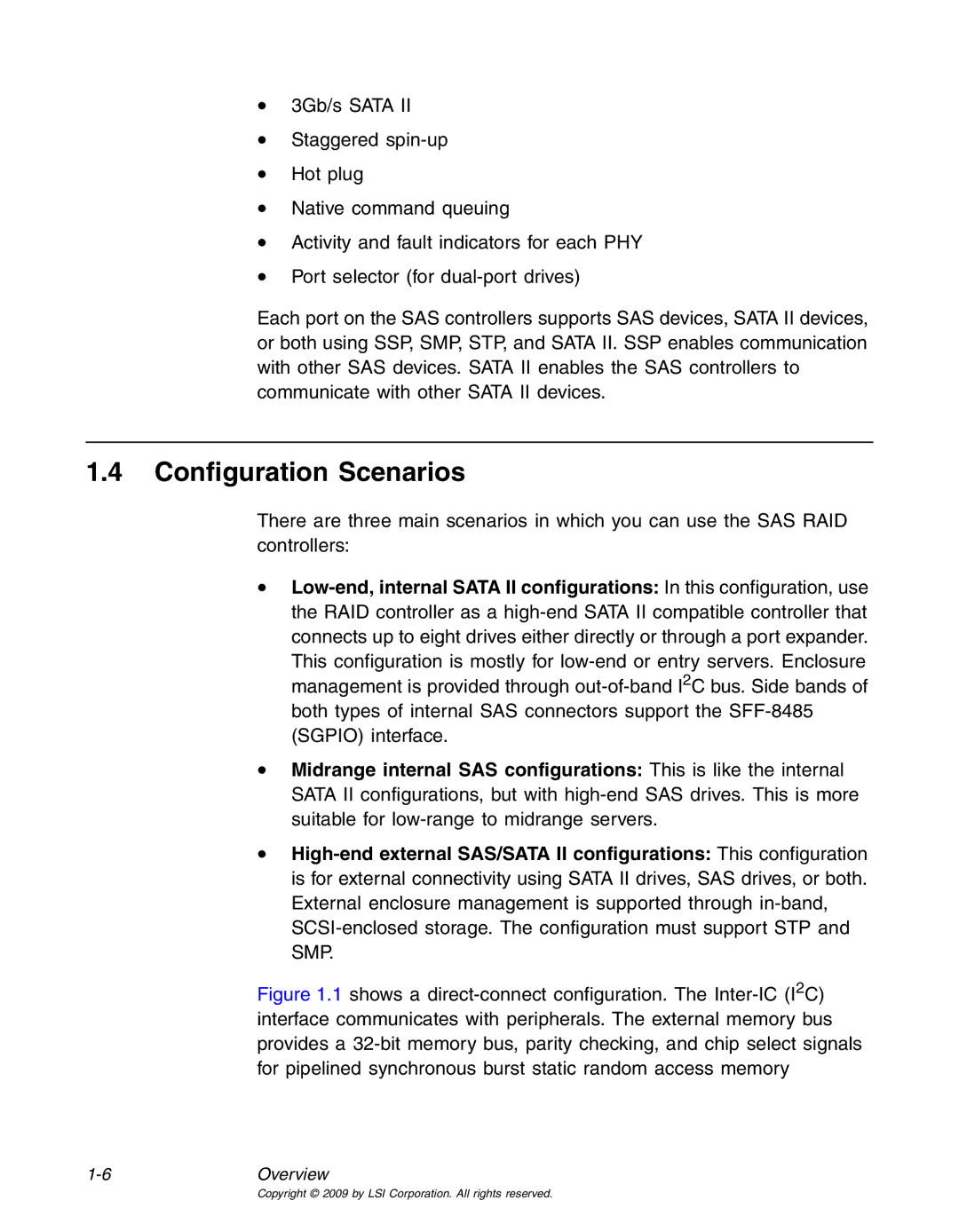•3Gb/s SATA II
•Staggered
•Hot plug
•Native command queuing
•Activity and fault indicators for each PHY
•Port selector (for
Each port on the SAS controllers supports SAS devices, SATA II devices, or both using SSP, SMP, STP, and SATA II. SSP enables communication with other SAS devices. SATA II enables the SAS controllers to communicate with other SATA II devices.
1.4Configuration Scenarios
There are three main scenarios in which you can use the SAS RAID controllers:
•
This configuration is mostly for
both types of internal SAS connectors support the
•Midrange internal SAS configurations: This is like the internal SATA II configurations, but with
•
Figure 1.1 shows a direct-connect configuration. The Inter-IC (I2C) interface communicates with peripherals. The external memory bus provides a 32-bit memory bus, parity checking, and chip select signals for pipelined synchronous burst static random access memory
Copyright © 2009 by LSI Corporation. All rights reserved.
